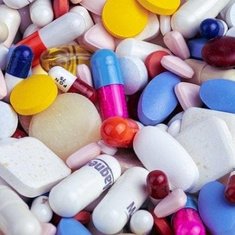|
what are the main characteristics of cancer?
|
what are the treatment options for cancer?
|
what are the major reasons for the severe side effects of cancer drug therapies?
|
what are the common mechanisms of resistance by cancer cells to drug therapies?
|
why do we use hormones to treat some cancers?
|
|
cells will proliferate without restraint
|
surgery
|
low therapeutic index
|
over- expression of the P-glycoprotein efflux pump involved in transporting drugs out of cells
|
because some cancers are hormone-dependant
|
|
radiotherapy
|
membrane modification
|
cells will invade and colonise spaces normally reserved for other cells |
chemotherapy
|
other cells rapidly divide also - not just cancer cells
|
prosurvival genes
|
|
immunotherapy
|
modification of target site
|
|
what are the types of anticancer drugs?
|
what are the broad mechanisms of each?
|
what are the most important examples of each?
|
what are their mechanisms of action?
|
what are their adverse effects?
|
|
genotoxic agents
|
affects DNA integrity by directly targeting DNA
|
doxorubicin
|
(intercalating agent) interacts directly with DNA by inserting itself between base pairs due to the planar aromatic chromophore in its structure
|
bone marrow suppression, hair loss, rash, GI upset, allergy, dilated cardiomyopathy, hand-foot syndrome, inflamed bowel
|
|
cyclophosphamide
|
(nitrogen mustard alkylating agent) covalently binds to nucleophiles in DNA, blocks DNA replication and interferes with transcription, leading to mutations
|
GI upset, vomiting, cystitis, bone marrow suppression, hair loss, low white blood cell count, increased risk of infertility, increased risk of other cancers
|
|
anti-metabolites
|
prevents DNA synthesis, as they are structurally similar to metabolites of these enzymes so are mistakenly processed as if they are the metabolites they resemble
|
methotrexate
|
(dihydrofolate reductase (DHFR) inhibitor) that competitively blocks DHFR and blocks DNA synthesis
|
GI upset, vomiting, headache, fatigue, abnormal blood cell count, liver damage, renal impairment, inflamed mouth, teratogenic effects
|
|
spindle inhibitors
|
interferes with the mechanics of cell division, stopping it during early mitosis by either binding to tubulin monomers and stop them polymerizing into microtubules or binding to microtubules to stabilise them and inhibit depolymerization
|
paclitaxel
|
(spindle inhibitor that specifically targets tubulin) disrupts mitotic spindle assembly and chromosome segregation, blocking cell division
|
GI upset, vomiting, hair loss, fatigue, muscle pain, hand-foot syndrome, bone marrow suppression, increased risk of infection, allergy, teratogenic effects
|
|
endocrine interference drugs
|
if a cancer cell requires a specific hormone administer an opposing hormone or a hormone antagonist
|
-
|
-
|
-
|
|
other enzyme inhibitors
|
inhibit other enzymes
|
-
|
-
|
-
|

